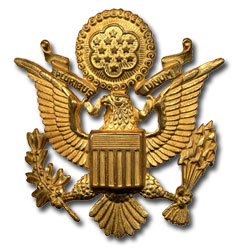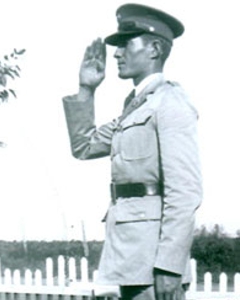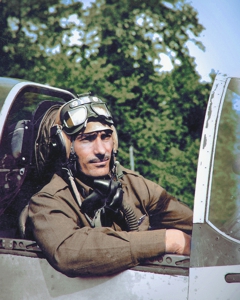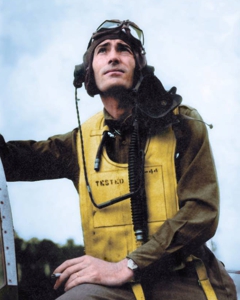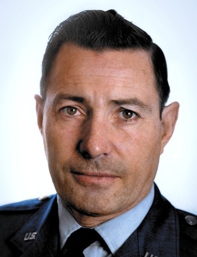Robert B. Curlee was born April 20, 1915 in Ben Hur, Texas. One of twelve children, he worked around the family farm. After finishing his primary education, he enlisted in the Army in 1936 and as a trooper served in the 7th Cavalry, F Troop --General Custer’s outfit. Curlee was assigned a horse named Old Grouch. He insisted the animal had been in the Battle of the Little Big Horn. With wounds all over, it was the meanest animal he had ever been around--every time he tried to saddle the horse, it would reach around, attempting to bite him in the butt!
At a time when you could buy your way out of the Cavalry, he did so and began studying to be a teacher. At this time, a German tyrant with a funny mustache started causing trouble in Europe. He then went to join the Army as an Infantryman, but decided he did not enjoy marching everywhere. Seeing a P-39 buzzing the barracks one day, he decided aviation was the way to go--why march to the battlefield when you could fly a HOT plane like a P-39? However, by the time he was in and flying, P-39's had been phased out. He would fly the P-51 Mustang and P-47 Thunderbolt in combat.
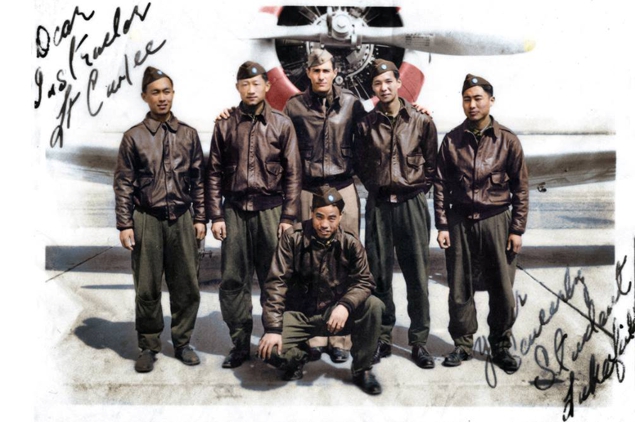
As a flight instructor at Luke Field, Arizona Lt. Curlee helped trained Nationalist Chinese pilots before volunteering to fly combat in Europe.
After passing basic flight instruction, he was assigned as an instructor at Luke Field in Arizona and helped train many pilots, including some Nationalist Chinese pilots. As D-Day approached 1st Lt. Curlee volunteered to fly combat in Europe. Around this time, he married Hilma Fernstrom, and the couple had their first child in 1944.
On June 6, 1944, 1st Lt. Robert B. Curlee arrived at the Lashenden Advanced Landing Strip, in south eastern England. One of six replacement pilots assigned to the 355th Fighter Squadron. It would be six days after arriving that he would fly his first combat mission which involved dive bombing targets near La Mans, France.
On his third mission he flew in a long-range escort to Berlin, on this five hour mission Lt. "Bob" Curlee flying P-51B-7 Mustang GQ-O, SN 43-6559, made his only aircraft claim of the war an ME- 410, a twin-engine fighter damaged on June 21, 1944.
For new pilots arriving into fighter squadrons it was standard procedure to be assigned wingman positions to gain combat experience. The wingman's job was to stick and cover his leader even through extreme High-G maneuvering. This resulted in many lost opportunities for air kills, but he preformed his assigned job without a hitch. On one occasion, he did get to fire his guns on a ME-262, but speed allowed the advanced jet to escape combat. The Luftwaffe’s engagement rules insisting air combat with fighters to be avoided also played a role in the jet’s escape.
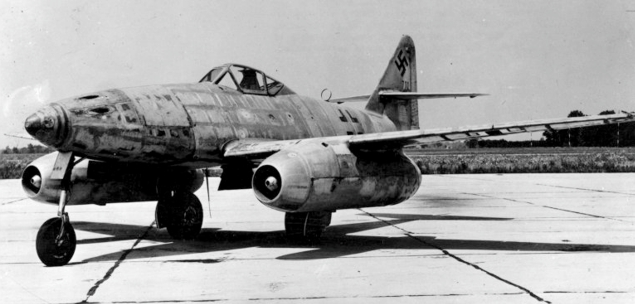
The Messerschmitt Me-262 was the German Luftwaffe's world's first operational jet powered fighter.
On January 5, 1945 he was to fly his last combat mission as Red Flight Leader. Capt. "Bob" Curlee led twelve P-47 Thunderbolts and successfully bombed the Schaafheim Airdrome without any losses.
During his combat tour, he participated in long-range escort of heavy bombers, ground attack missions, fighter sweeps and also one mission involved leaflet dropping near Nantes, France.
In January 1945 out of Rosières-en-Haye, France (A-98) a dozen tour-expired pilot went home among them was Capt. Robert Curlee. All during the war, he was a Reserve Officer, and one of the first Reserve Officers to be offered a Commission in the Regular Army Air Force. Capt. Curlee finished his tours in Europe and advanced in rank after the conflict had ended, finishing his military career in 1966 as a full Colonel.
After the Air Force, Retired Col. Curlee worked for Fairchild out of San Jose, California. He then decided to move with his wife and family of six children to Northwest Arkansas. He bought a farm and slowly worked it until he was able to show gaited horses around 1978.
Colonel Curlee began to suffer from health problems in 1984. A doctor performing exploratory surgery on him found that he had an advanced case of pancreatic cancer. The cancer had wrapped all around his spine. The doctors gave him six months to live and Col. Curlee passed from this earth on May 28, 1985.
He is survived by his wife, Hilma Curlee and six children. On August 11, 2013 Hilma celebrated her 90th birthday with all of her children in attendance. Col. Curlee's white dress service cap (bus driver's hat) was placed at the head of the table to represent his presence. Still very active, she is an honor to Colonel Curlee’s memory.

